Cloud Architecture Series-Durable Messages using Windows Azure (Cloud) Service Bus Queues–Establishing your service through the Portal
| Introduction |
| The purpose of this post is to explain and illustrate the use of Windows Azure Service Bus Queues.
This technology solves some very difficult problems. It allows developers to send durable messages among applications, penetrating network address translation (NAT) boundaries, , or bound to frequently-changing, dynamically-assigned IP addresses, or both. Reaching endpoints behind these types of boundaries in extremely difficult. The Windows Azure Service Bus Queuing technologies makes this challenge very approachable. There are many applications for this technology. We will use this pattern to implement the CQRS pattern in future posts. 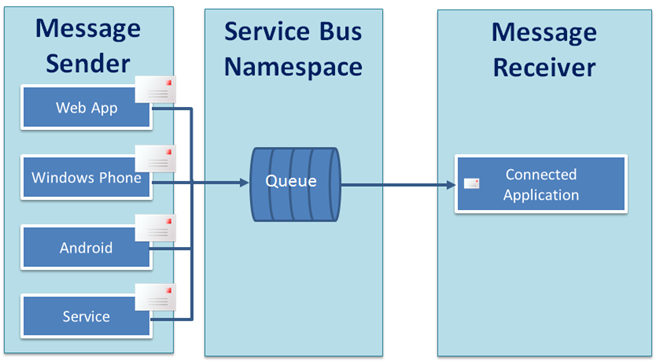 |
| Topics |
Windows Azure also implements the concept of "Topics." In a topic-based system, messages are published to "topics" or named logical channels. Subscribers in a topic-based system will receive all messages published to the topics to which they subscribe, and all subscribers to a topic will receive the same messages. The publisher is responsible for defining the classes of messages to which subscribers can subscribe.
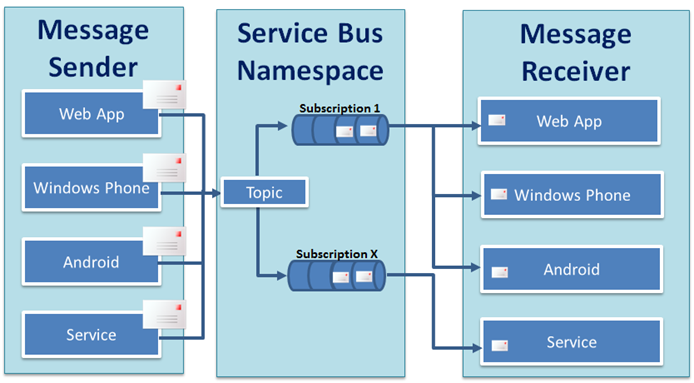 |
| Well known pattern in computer science |
These technologies reflect well known patterns in computer science, such as the "Pub-Sub" or publish-subscribe pattern. This pattern allows senders of messages (Publishers) to send these messages to listeners (Subscribers) without knowing anything about the number of type of subscribers. Subscribers simply express an interest in receiving certain types of messages without knowing anything about the Publisher. It is a great example of loose coupling.
|
| Getting Started at the portal |
| The next few screens will walk you through establishing a namespace at the portal. |
| Essential Download |
|
| Establishing a namespace for the service bus endpoint |
Select “Service Bus, Access Control & Caching” as seen below. 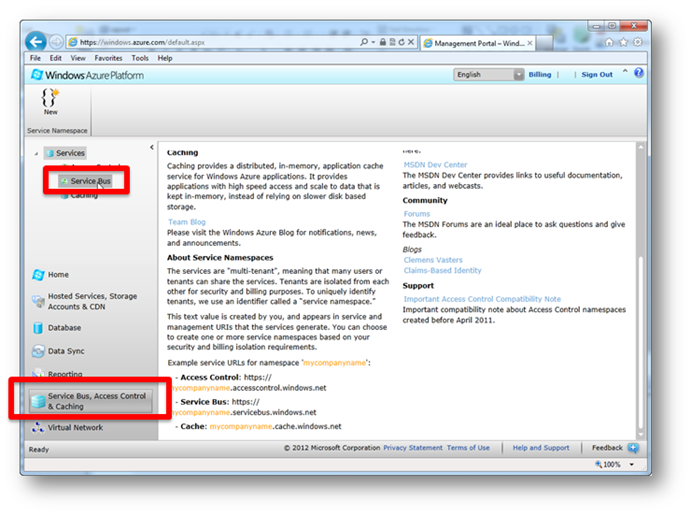 |
| Creating a new service bus endpoint |
Click “New” 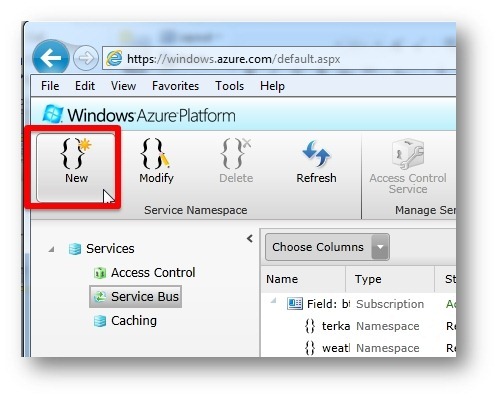 |
| Providing a namespace, region. Selecting services. |
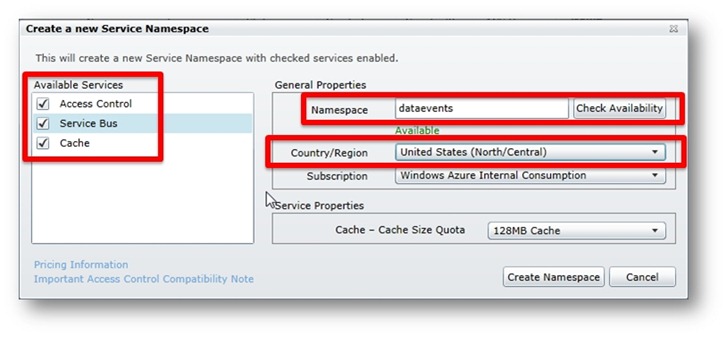 |
| The end result |
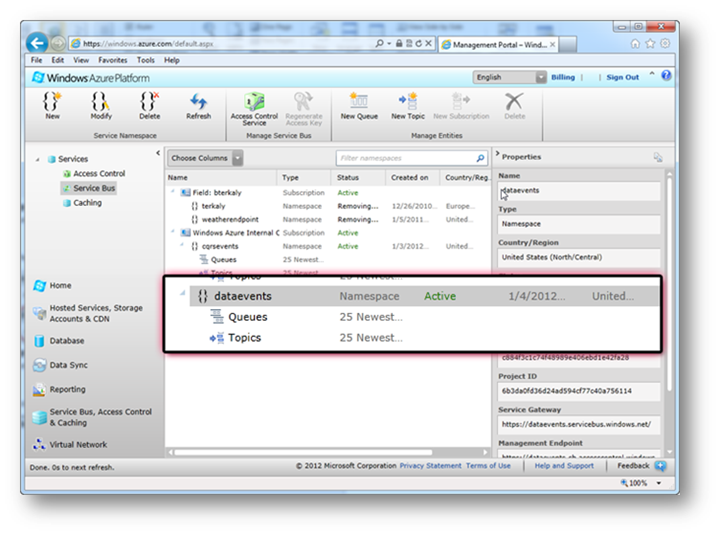 |
| Summary of information from portal |
|
Download for Azure SDK |